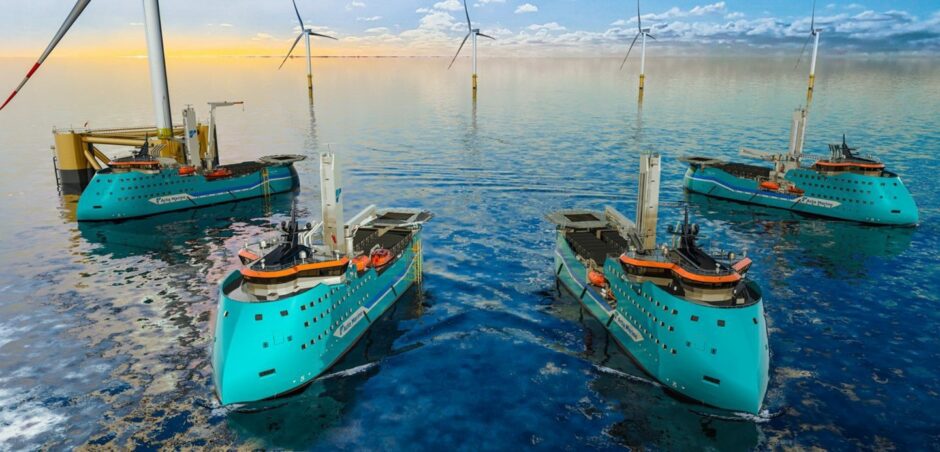
Norway’s Ulstein is on a roll with Dutch company Acta Marine, with two more offshore wind support ships to build with a further pair on option.
The order builds on a prior relationship between the two companies; Ulstein has already built two CSOVs (commissioning service operation vessel) for Acta.
This time, it is opting for a new generation of construction service operation vessel developed by the Norwegian ship designer and builder, and known as the SX216 class.
The best way to describe what Ulstein calls its “Twin X-Stern diesel-electric concept” is to think of huge shuttle ferries, like the famous Staten Island Ferry in New York which has a propeller at each end.
This balanced push-pull arrangement is highly effective and is commonly applied to modern ferries: typically four Schottel azimuthing nozzles arranged two per side at each end.
Some are “plug and play”, which means they carry a spare nozzle unit that can quickly replace a faulty one to minimise service interruption while the damaged unit is being fixed.
Not only has Ulstein adopted this approach – it was originally developed around 150 years ago – the vessels to be built for Acta will be fitted with dual-fuel methanol/diesel fuelled generators.
The designer describes its SX216 class as a “ship with two sterns” and claims the Twin X-Stern design will deliver improved fuel efficiency, increased dynamic positioning (DP) capability and manoeuvrability, reduced motion at sea and reduced noise.
It also offers greater flexibility regarding the choice of propeller type, a bi-symmetric hull shape and propulsion setup with fewer nozzles is possible.
The Norwegians are leading proponents of hybrid-powered vessels and are pack leaders when it comes to fuelling with green methanol as the main source of energy
In Acta’s case, the dual-fuel engines will be backed up by a battery package that will be “integrated into the vessel in such a way as to allow the most fuel-efficient modes of operation, reduced maintenance costs and reduced emissions”.
Erwin Jager at Ulstein Design & Solutions says the classic diesel’s days are numbered.
“The carbon footprint of marine gas oil (MGO) makes MGO non-sustainable as the sole choice for the future.
“Currently, the decision on what alternative fuel to focus on can be overwhelming as it is affected by many factors internally and externally.
“Through a decision support process, developed by Ulstein to guide owners in the myriad of choices to be made, a matrix of alternative fuels has been evaluated towards a set of criteria unique to the shipowner and the business case.
“Through this process, methanol came out as the winner for this project, with the best overall score.
“The energy density and storage of methanol is favourable, it is an accessible energy source, and there are dual fuel engines available in the market that can handle both methanol and diesel.”
Now for some detail of the SX216 class. It has a length of 89.9m, a beam of 19.2m and will be fitted out to accommodates up to 135 personnel.
It will be fitted with a walk-to-work (W2W) motion compensated gangway for safe personnel transfer to turbines, a 3D-motion-compensated crane for cargo transfer and will be equipped to carry a daughter craft for in-farm transfers.
The new vessels will be constructed at the Tersan yard in Turkey.
This is not all as Ulstein is working in consortium with James Fisher of the UK, Ulstein, DnV and Graig Shipping (another British company) on the next evolution of its Twin X-Stern; the so-called Ulstein SX221 Diamond SOV.
The Diamond SOV project is “expected to provide a future-proof design to address the increased demand for SOVs, reduce the levelized cost of energy, an deliver high levels of operability, personnel comfort, and sustainability.”
Arnstein Eknes, segment director, Special Ships, DNV, says: “With larger turbines being installed further out at sea, vessels and crews will be travelling greater distances and working for longer periods of time in harsher environments.”
Recommended for you
